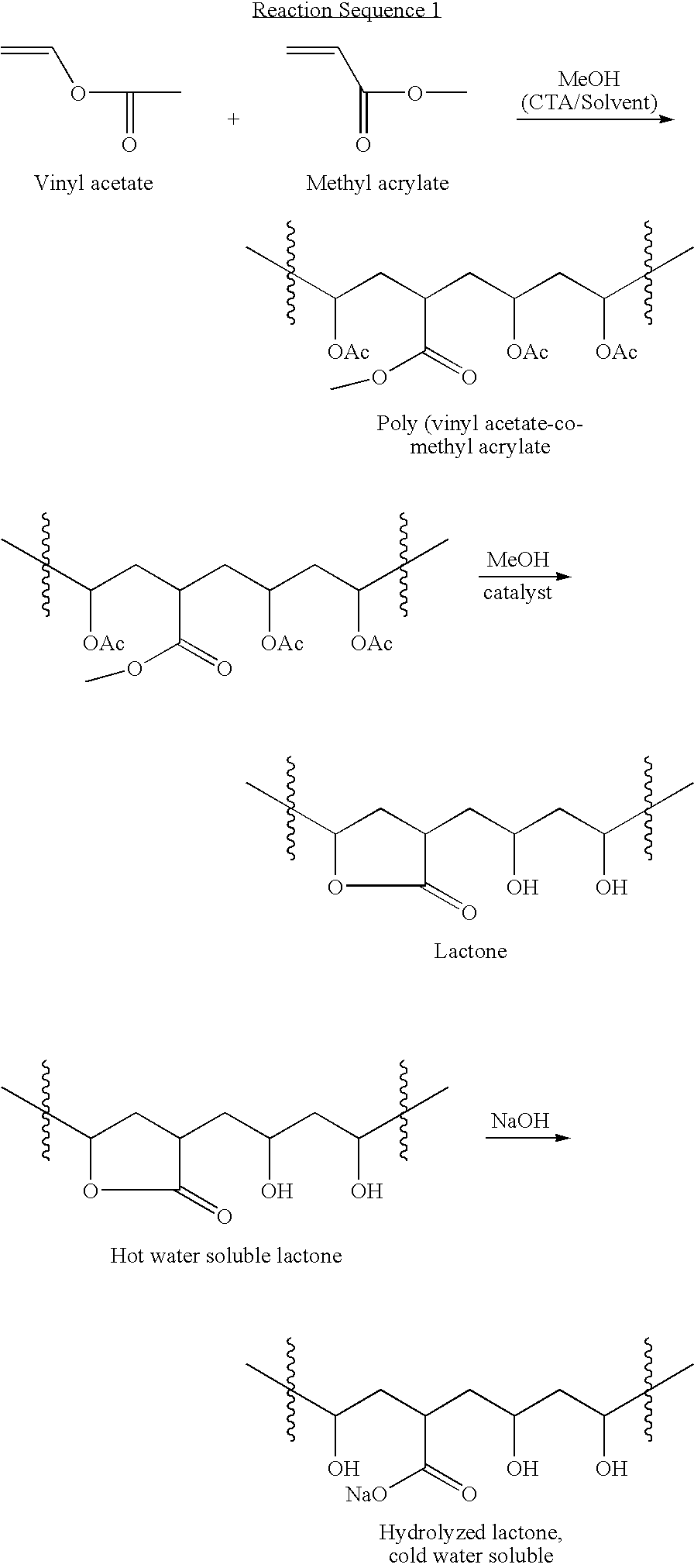Treatment of recreational water
a technology for recreational water and water treatment, applied in water/sewage treatment by oxidation, water softening, biocide, etc., can solve the problems of deterioration of film solubility, inability to treat water treatment applications, and greater than 98% hydrolysis of polyvinyl alcohol
- Summary
- Abstract
- Description
- Claims
- Application Information
AI Technical Summary
Benefits of technology
Problems solved by technology
Method used
Image
Examples
example 1
[0046]An oxidizing composition containing 85% OXONE, 14% anhydrous sodium carbonate, and 1% ZETAG 7568 cationic clarifier was prepared by blending the components. The amount of sodium carbonate was an amount sufficient to make the pH of a 1% solution of the solid composition equal to 7.2-7.6. The oxidizing composition (nominally 30 g.) was sealed in a pouch made from Film 1 having a thickness of 0.0015 inches (0.038 mm). The filled pouches were stored at 38° C. for 0, 21, and 42 days. The storage conditions were 38° C. with 80% relative humidity. However, to simulate recommended storage, the pouches were stored in sealed secondary containers (screw-capped high-density polyethylene jars) so the pouches were not continuously directly exposed to the high humidity conditions. After aging, the pouches were opened, the contents discarded and residual powder removed. Film portions were cut and mounted in frames and tested as described in Test Method 1. Disintegration time (time required fo...
example 2
[0047]A 300-gallon (1136 L) residential spa was used to demonstrate the treatment of a re-circulating water system with oxidizing agent in a sealed water-soluble pouch prepared as in Example 1. The spa was maintained at 99 to 100° F. (37° to 38° C.) and was sanitized with elemental bromine. Total alkalinity (expressed as mg / L calcium carbonate), total hardness (also expressed as mg / L calcium carbonate), pH and total bromine concentration were tested using AQUACHEK Select Pool and Spa test strips (from Environmental Test Systems, Inc., Elkhart Ind.) and found to be within acceptable limits (alkalinity 100-150 mg / L, total hardness 200-300 mg / L, pH 7.4 to 7.6, bromine 4 to 5 mg / L). Sealed pouches were prepared using film cast from a hydrolyzed copolymer of vinyl acetate and methyl acrylate, containing 4 to 30% by weight starch as described in the US Patent Application 2004 / 0161559. The film thickness was 0.002 inch (0.05 mm). The pouches were filled with the blended oxidizing compositi...
PUM
| Property | Measurement | Unit |
|---|---|---|
| temperature | aaaaa | aaaaa |
| temperature | aaaaa | aaaaa |
| mole ratio | aaaaa | aaaaa |
Abstract
Description
Claims
Application Information
 Login to View More
Login to View More - R&D
- Intellectual Property
- Life Sciences
- Materials
- Tech Scout
- Unparalleled Data Quality
- Higher Quality Content
- 60% Fewer Hallucinations
Browse by: Latest US Patents, China's latest patents, Technical Efficacy Thesaurus, Application Domain, Technology Topic, Popular Technical Reports.
© 2025 PatSnap. All rights reserved.Legal|Privacy policy|Modern Slavery Act Transparency Statement|Sitemap|About US| Contact US: help@patsnap.com

